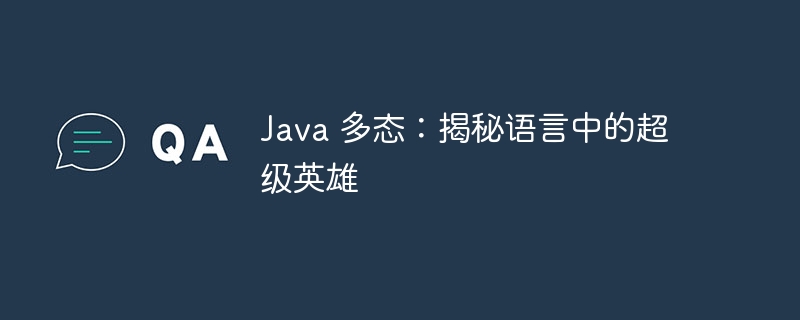

Java polymorphism is an important concept in object-oriented programming and is called the superhero of the language. Through inheritance and interface implementation, polymorphism in Java can realize different forms of objects, improving the flexibility and scalability of the code. PHP editor Baicao will reveal the secrets of Java polymorphism for you and take you to have an in-depth understanding of this powerful and magical feature.
There are two main types of polymorphism: compile-time polymorphism and run-time polymorphism.
Polymorphism has many advantages, including:
Polymorphism also has some disadvantages, including:
The following is an example of polymorphism:
interface Animal {
void speak();
}
class Dog implements Animal {
@Override
public void speak() {
System.out.println("Woof!");
}
}
class Cat implements Animal {
@Override
public void speak() {
System.out.println("Meow!");
}
}
class Main {
public static void main(String[] args) {
Animal animal = new Dog();
animal.speak(); // prints "Woof!"
animal = new Cat();
animal.speak(); // prints "Meow!"
}
}In this example, the Animal interface defines a speak() method, and both the Dog and Cat classes implement this method. The Main class creates an Animal object that can point to a Dog or Cat instance. When the speak() method is called, its behavior depends on the type of object.
Polymorphism is a powerful feature of an object-oriented programming language, which can make your code more flexible, easier to maintain and avoid duplication of code. However, polymorphism also has some disadvantages, including complexity and performance.
The above is the detailed content of Java Polymorphism: Uncovering the Superheroes of the Language. For more information, please follow other related articles on the PHP Chinese website!




